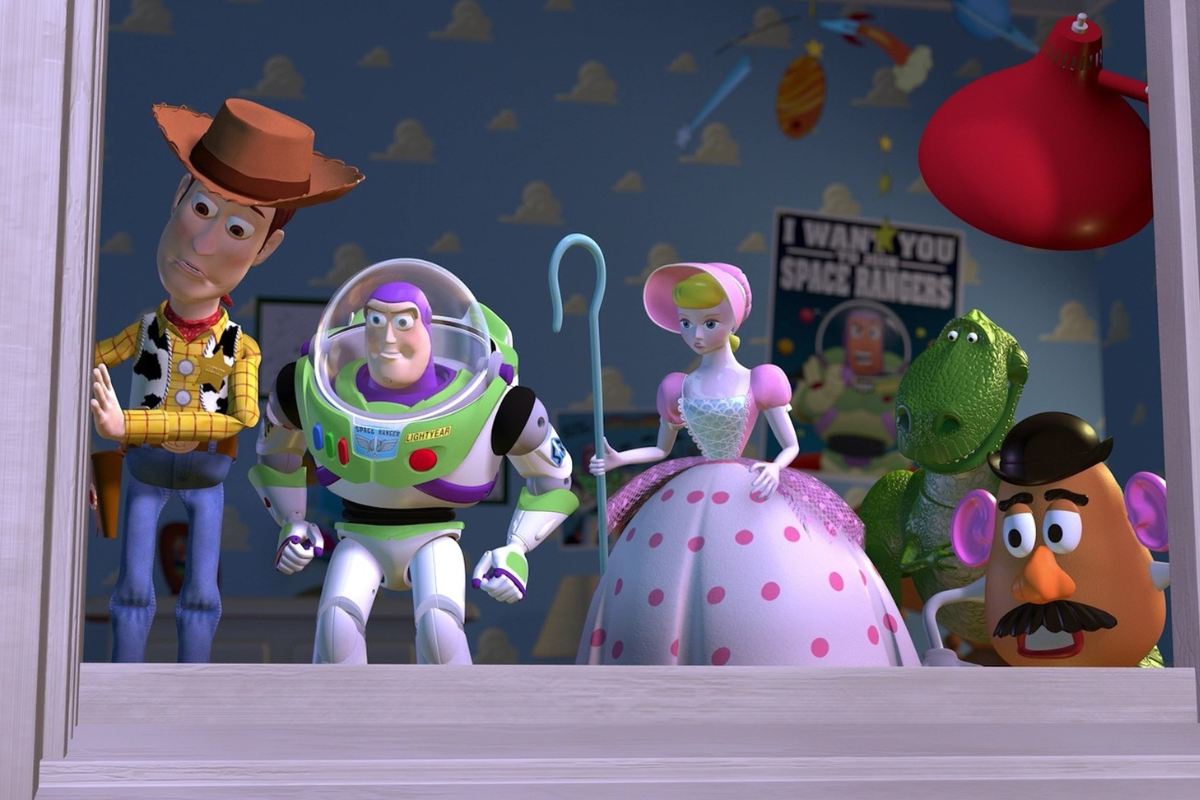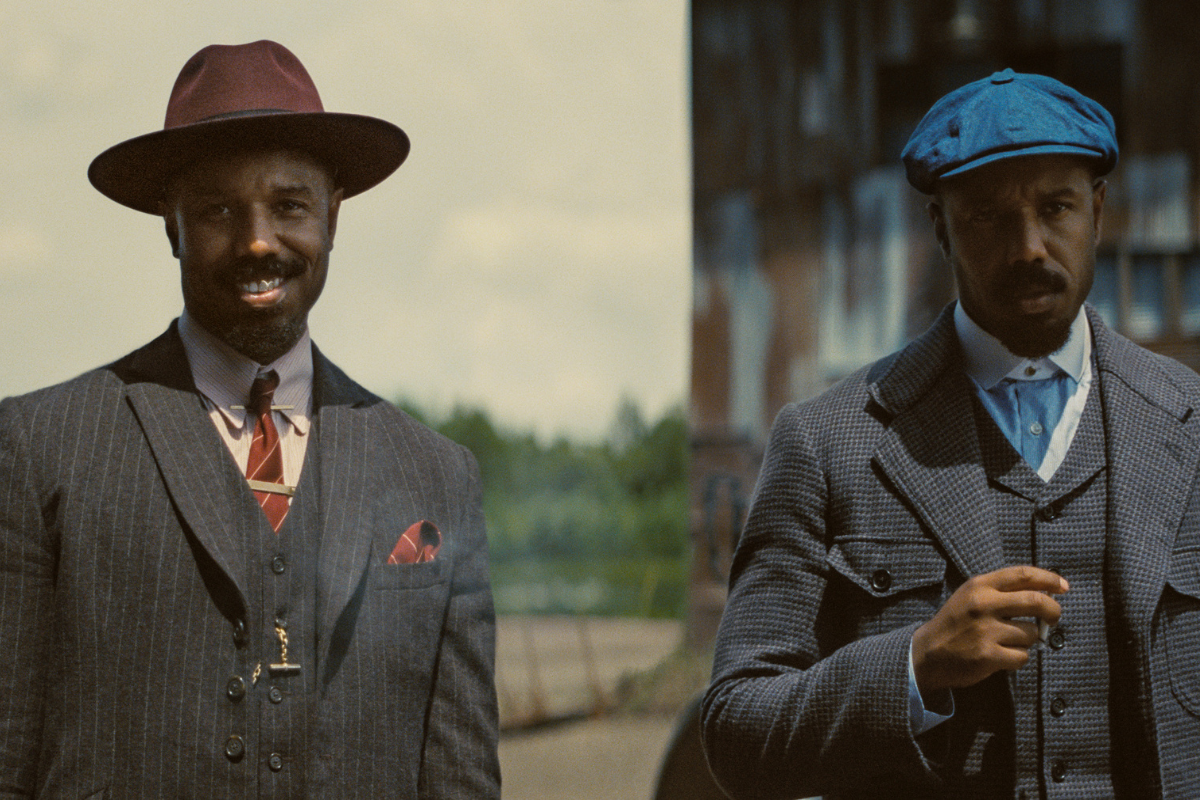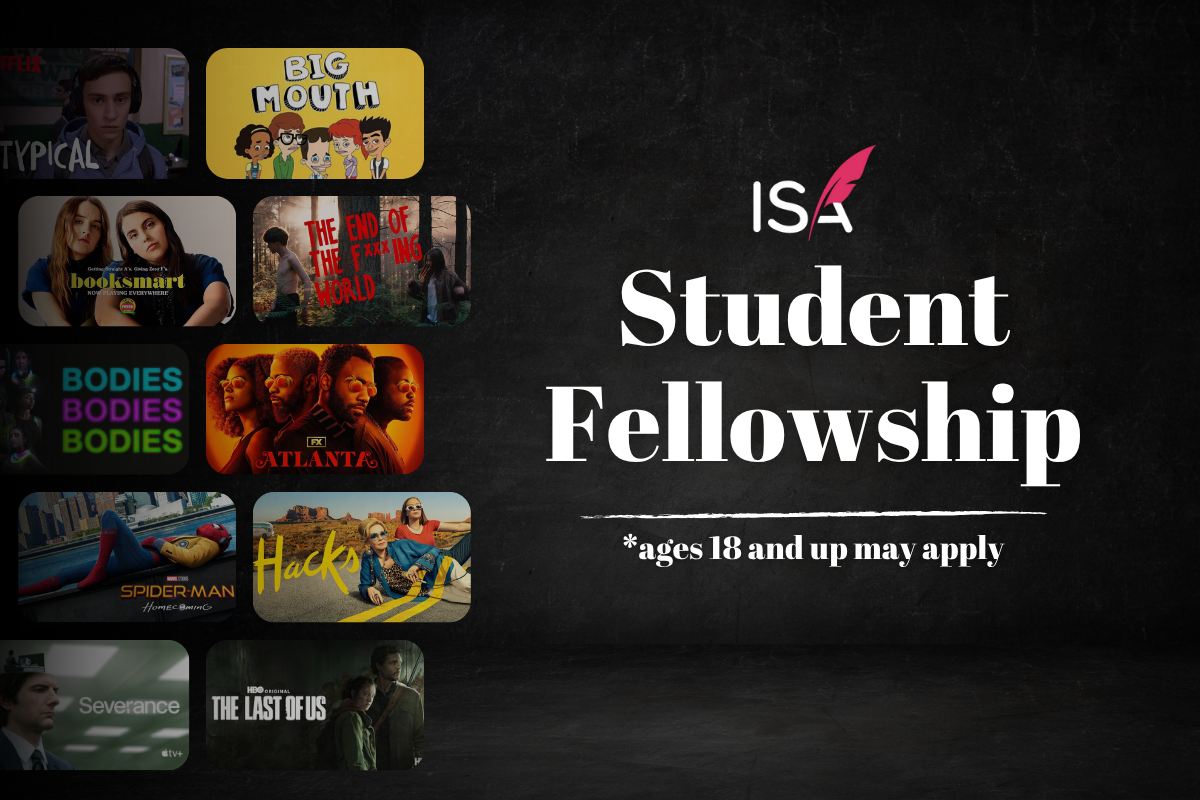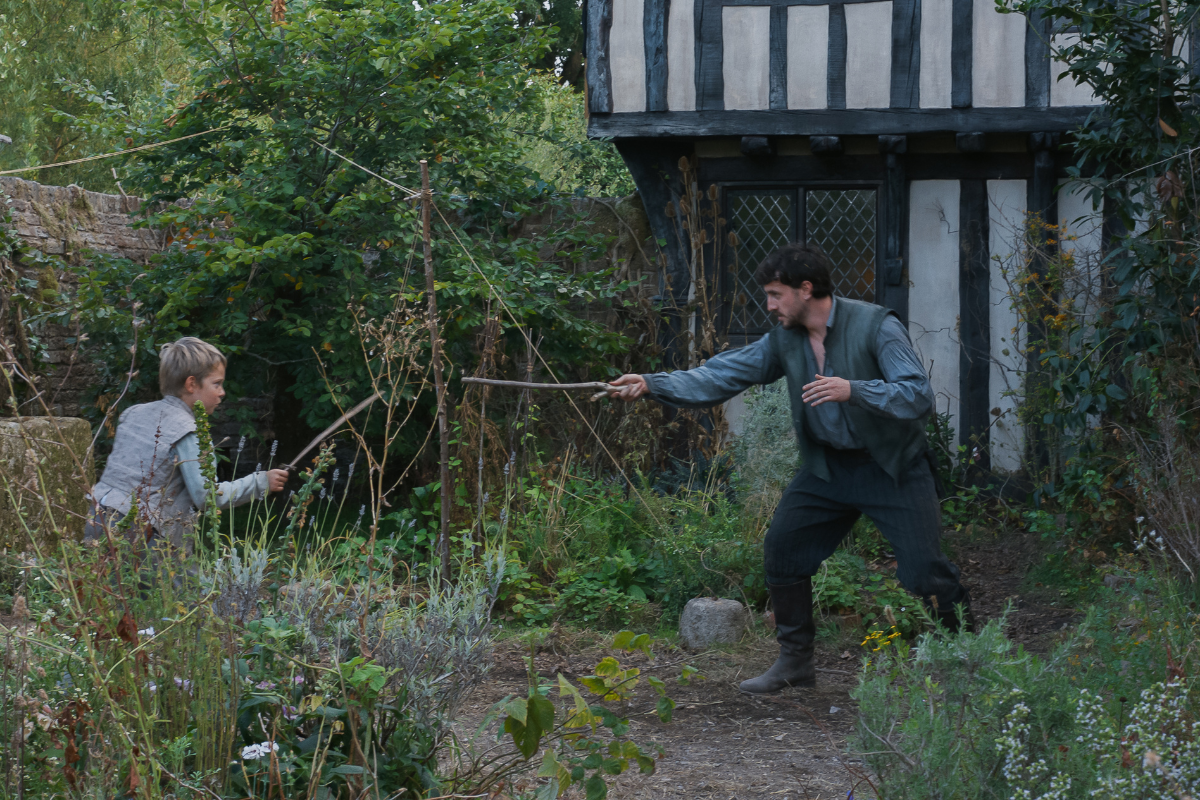BREAKING & ENTERING: Story Ideas – Catch Bigger Fish With The Irresistible Lure
Looking to catch a Big Fish? A rep, meeting or sale? Barri Evins’ advice on creating an irresistible lure: the ultimate bait that gets the industry to bite.
A producer who’s sold to all the majors, Barri Evins created Big Ideas to give aspiring screenwriters what it takes to break into the business by sharing methods she uses with professional writers. Sign up for Barri’s newsletter and follow her on Twitter @BigBigIdeas.
Turns out there was a terrific response to my column last month on outlining for meaning. I received lovely compliments from former students and friends, and a lot of people asked for the Big Ideas Structure Template.
All good, right?
Nope.
Because now it’s time for my March article, and I’m feeling a bit of pressure to find a compelling topic and explore it in a way that is informative yet entertaining. It’s what I like to read. It’s what I hope helps you the most.
As I really do practice what I preach, I hit my Idea File and poured through potential article titles, quotes, sources of inspiration and the odd doodle of a thought. In the process, I came across a file from over a year and half ago which had a catchy title, so I open it up. At first, I could barely decipher what it was about. It truly was one of those hastily jotted notes; so cryptic – including broken sentences and typos – I couldn’t quite figure out what I was thinking in the first place… But there was just enough… a trail of breadcrumbs if you will, to pinpoint the source of my inspiration.
Ah-ha! The note was prompted by something I’d seem on TV about fishing lures.
Yes, fishing lures.
From there it was an easy enough Google search. And et voilà!
I give you the Mighty Bite™: The Only Five Sense Fishing Lure System!
According to the good folks at Wikipedia:
A fishing lure is a type of artificial fishing bait which is designed to attract a fish's attention. The lure uses movement, vibration, flash and color to bait fish. Many lures are equipped with one or more hooks that are used to catch fish when they strike the lure. Most lures are attached to the end of a fishing line and have various styles of hooks attached to the body and are designed to elicit a strike resulting in a hookset.
You can see why I was so excited to find this catchy topic for an article on the industry, right?
Lemme break down the creative process here: For me, growing up in Florida with a father who longed to have an impressive catch mounted on the wall, I spent a fair amount of time fishing. In case you haven’t had rod and reel experience, the key to success is often in the bait.
You must have the right lure to attract the specific fish you want to catch.
Pretty good metaphor for the industry. In fact, bordering on the profound.
Loglines, queries, pitches, and spec scripts are lures!
Trailers, one-sheets, stars’ appearances on talk shows – are all lures.
All these lures, much like the Mighty Bite™, are bait designed to catch something – the attention of the reader, the buyer or the audience. The bigger the better.
Both the origins of fishing and of storytelling go back to the Stone Age. Perhaps 40,000 or so years ago, early man, having just mastered making tools, crafted a fishing hook out of stone and headed out to the water, only to return to the cave later without any fresh catch to eat but an engaging tale about “the one who got away.”
As writers, you are out to catch the Big Fish. Whatever that means to you – garnering a contest win, landing a manager or agent, pitching an industry pro, making a spec sale, putting together financing for an indie film – that is your personal Moby-Dick, the great white whale you’re obsessively pursuing.
The big selling point for the Mighty Bite™ is that it is designed to be irresistible to a hungry fish:
“Looks, smells, sounds, feels, tastes, and swims like a wounded baitfish.”
For “wounded baitfish,” let’s substitute a very marketable, castable, sellable project – with some extra level of sell that gives it a unique spin and makes it stand out. That is what Hollywood is hungry for.
Here’s how to create an irresistible lure and get the industry to bite, instead of winding up with yet another “one that got away” tale.
Your Lure Looks Tasty
In fishing, we’re hoping to get a fish to strike – that means go for the bait. Now the fish may hit the bait and then swim away; they may take the bait and cleverly elude the hook; or they may bite, but you’re unable to reel them in, scoop them up with your net, and get them into the boat. Whatever the problem, the result is you failed to land the fish. Every strike is precious. You need lots of strikes to land a Big Fish and be able to strike a deal.
You won’t be getting strikes on your query, logline, pitch, spec, book proposal, or TV deck if they don’t conform to the rules of their medium, and if aren’t polished and shiny. Like many fish, we humans are attracted to shiny objects.
Don’t fail to ensure that your work looks absolutely professional on every count. You can’t afford little mistakes like typos, or big mistakes like murky conflict, and expect your lure to do its job and get you a lot of strikes.
If you’ve written a lot of material, you’ve likely mastered the nuances of formatting and the conventions of the medium. I’m not talking down to you or to anyone. You’d just be surprised at how many writers present material that simply is not ready for the eyes of professionals.
You only get one chance to cast that lure in to the water and go after that Big Fish. Make sure it shines.
Your Lure Smells Tasty
Just how the clever people at Mighty Bite™ manage to make their lure smell good mystifies me. For that, I always thought you needed live bait. Nothing beats that. A squiggly, wiggly worm or a tiny live fish on your hook is irresistible to a hungry Big Fish.
Think about all the chum – live bait made up of chopped and bloody fish – that they ladle into the water in Jaws to attract the great white. Especially effective, since sharks have a keen sense of smell. Sure enough, the shark is lured to the bait, but sneaks up on them and gives them a shocking look at how huge their prey really is.
Are you using live bait?
Like sharks, industry professionals have a keen sense of smell.
Live bait is the confluence of a strong, hooky concept, an identifiable audience, superb execution, and something more…
To truly get buyers to strike, your writing needs to show you are a confident writer with a voice. That means you are a compelling storyteller, have a point of view on the human condition, and a distinctive style. Voice is one of the most highly prized qualities in a writer by the industry.
Being a writer with a voice makes you live bait. An irresistible lure.
It may be the most powerful tool in your tackle box.
Your Lure Sounds Tasty
Does your story sound tasty? When you’re trying to lure industry eyeballs, sounding tasty is essential.
You won’t sound tasty if you fail to convey what your story is about and do so cleanly, clearly, and viscerally. Whether it’s a live pitch or it’s on the page, your story must sound tasty to hook a Big Fish.
Writers pour a lot of time and effort into their material, but often fail to place equal significance on their lure – all those materials that present their project to the wide world of Big Fish out there.
You spend time re-writing, polishing, proofing, getting feedback from friends, and even paying for professional consultations on your material. Shouldn’t you put the same effort into your lures?
Over my career, I’ve seen a ton of “lures” that didn’t sound tasty enough to catch anything. It’s what inspired me to offer consulting not just on scripts, but consults specifically for loglines, queries, and pitches. I’ve had clients go from stories I could barely decipher to strong, effective materials ready to go in front of the Big Fish.
Putting in the effort to make certain that your lure sounds tasty pays of when you're looking to reel in a great catch.
Your Lure Feels Tasty
One thing an experienced angler (love the fancy word for fisherman) knows, is that you must to have the right bait to attract the specific fish you are after. There are special lures for fresh water fish, saltwater fish, fly-fishing, and countless others. Bait for one type of fish may hold no appeal to another.
The key is having the right bait that fits your target. And not waste time casting your line where no fish will bite. Know your audience.
That means both the audience for your project and the audience you are pitching the project to. Having the right bait for the Big Fish that you’re after ups your chances of making a catch.
Knowing who you are pitching to and what they are looking for is key. In Secrets From The Other Side of The Desk, I’ve listed seven ways to slam dunk a pitch and seven ways to ensure that you’re sunk.
Make sure you have the bait that will feel tasty to the exact Big Fish you’re looking to hook.
Your Lure Swims Like Easy Catch
The goal is to get the Big Fish to take the bait. How your lure looks, smells, sounds, feels, tastes will create interest. But you need a lot of strikes to reel in a Big Fish.
To get a lot of strikes, convince us that it’s an easy catch.
That means based on your lure, we can figure out how to sell it, and who will buy it. It requires a readily identifiable audience and a clear marketplace – a potential buyer, or better yet, many hungry fish who will be interested in this bait.
If your bait fails to convince us who the audience is, we won’t be able to sell your project, because audiences won't know how to decide if it’s a movie they want to see or not.
How do we identify the audience? Most often, through the genre.
I recently read a ScriptMag article by the always articulate John Truby, Choosing Movie Genres – The Secret to Your Screenwriting Success. He explains, “Genres tell the audience up front what to expect from the product they are buying. If they like a particular kind of story, chances are they will like this particular film.”
Over the past few weeks, I pressed a Logline Booster Shot client to clarify their genre and they came up with six genres. Six! Although this writer may feel they are being inventive and perhaps an innovative rule breaker, I’m willing to bet that what lies beneath – the script itself – lacks focus. The choice of genre is a reflection of that. The result is a mish-mash that no one will know how to sell.
(Actually, as I’ve been writing this article I received the latest draft from the writer, and am proud to say they have honed in on two genres and taken a great step forward on their logline.)
Being an easy catch means that your story targets a specific movie-going audience by making a clear genre or popular genre combination inherent in your bait. It should come across in every element of your lure – the title, the premise, the logline, the pitch, the writing, the characters, the dialogue, the conflict, and the stakes. Each component must work together to support the genre you’ve chosen and convince us that your project is an easy catch.
The Lure Gets Fish to Strike and Strike Often
Looks, smells, sounds, feels, tastes, and swims like an easy catch is a combination that is irresistible to the Big Fish you’re trying to hook. That sends your odds of getting a Big Fish to bite on your project waaay up. The more bites you get, the better the chances of hooking and landing a prized catch to mount on your wall.
Remember what Wikipedia said about lures? That many have multiple hooks to ensure that when a fish strikes the bait they are caught.
Even if your lure looks, smells, sounds, feels, tastes, and swims like an easy catch, you might still be missing the biggest hook of all:
The Hooky Idea
Ideas have the most power to hook a Big Fish. It’s the commodity the industry trades in. Concepts are why projects are purchased, how they are marketed, and who goes to see them. Ideas are intoxicating.
The Hooky Idea is the key component of your lure. The one you craft and hone from the very first moment, long before you type “Fade In.” The harsh truth is that the idea is more influential than the execution in landing a Big Fish.
The Hooky Idea is crucial to your success. It should be sharp enough to grab the attention of the Big Fish. And while it may – and should – contain familiar elements, you bring a fresh spin that ensures the Big Fish is caught and stays on the hook. Here are my ten essential tests to determine if you have a Hooky Idea.
In case you have a craving for reeling in some fresh fish of your own, check out my friends at Mighty Bite™ here for an offer not available in stores!
For those of you angling to catch a Big Fish in the industry, make sure you have a tantalizing lure and, as they say, “Make this the best fishing season of your life.”
Get more tips from Barri Evins with her on-demand webinar
Loglines, Queries & Synopses:
How to Take Your Script from Being Ignored to Getting Noticed!
Barri Evins draws on decades of industry experience to give writers practical advice on elevating their craft and advancing their career. Her next SCREENWRITING ELEVATED online seminar with 7 monthly sessions plus mentorship will be announced in 2025. Breaking & Entering is peppered with real life anecdotes – good, bad, and hilarious – as stories are the greatest teacher. A working film producer and longtime industry executive, culminating in President of Production for Debra Hill, Barri developed, packaged, and sold projects to Warners, Universal, Disney, Nickelodeon, New Line, and HBO. Known for her keen eye for up and coming talent and spotting engaging ideas that became successful stories, Barri also worked extensively with A-List writers and directors. As a writer, she co-wrote a treatment sold in a preemptive six-figure deal to Warners, and a Fox Family project. As a teacher and consultant, Barri enables writers to achieve their vision for their stories and succeed in getting industry attention through innovative seminars, interactive consultations, and empowering mentorship. Follow her on Facebook or join her newsletter. Explore her Big Ideas website, to find out about consultations and seminars. And check out her blog, which includes the wit and wisdom of her pal, Dr. Paige Turner. See Barri in action on YouTube. Instagram: @bigbigideas X: @bigbigideas







